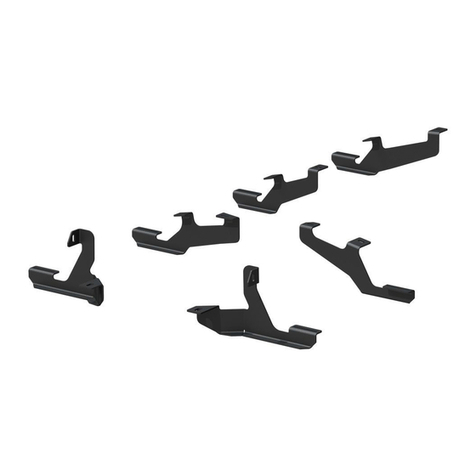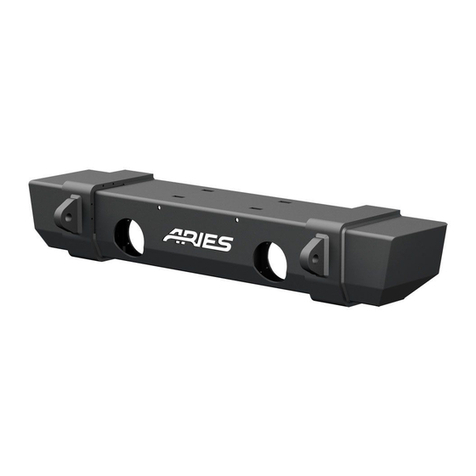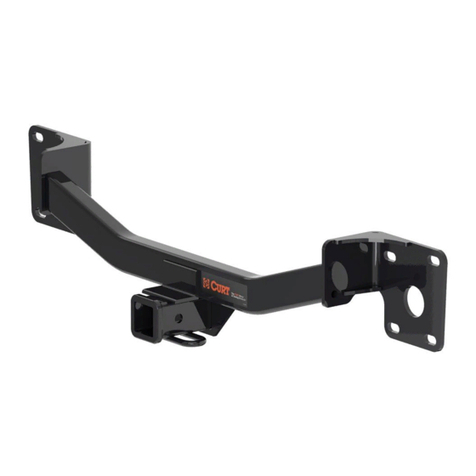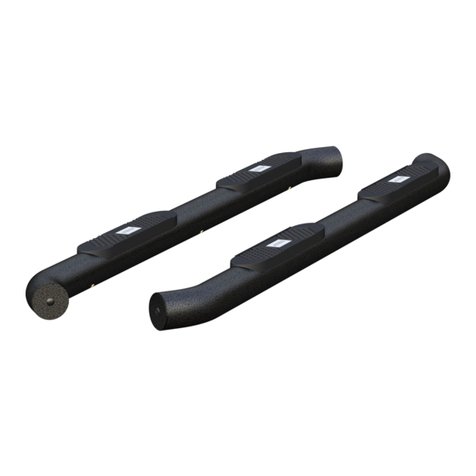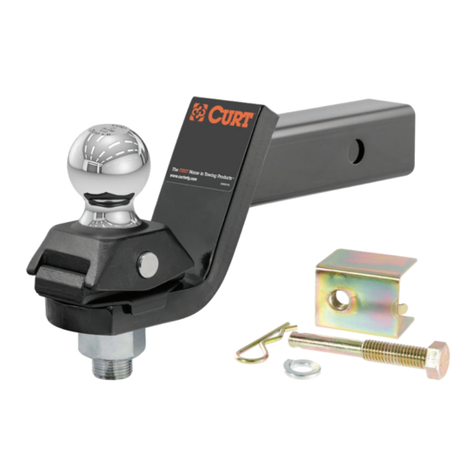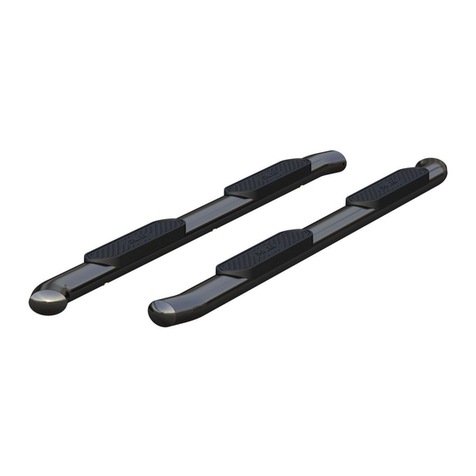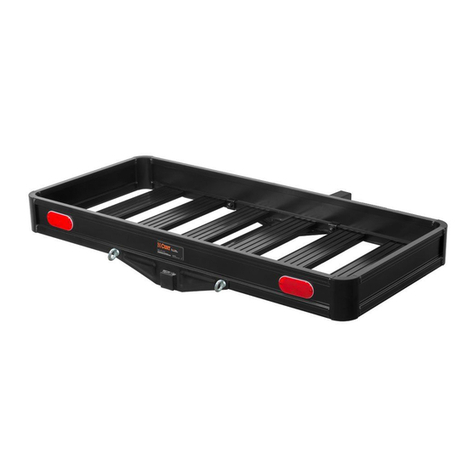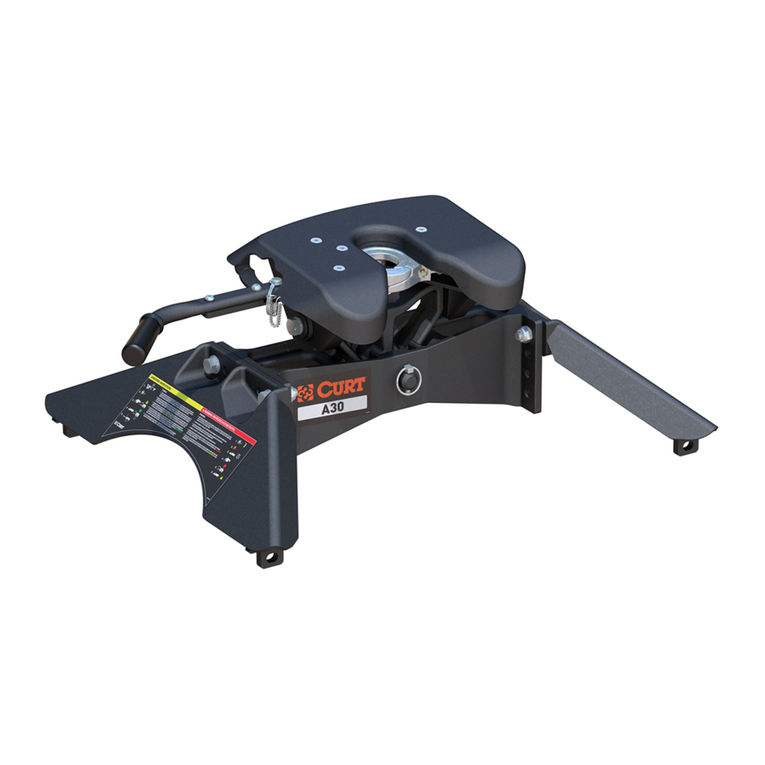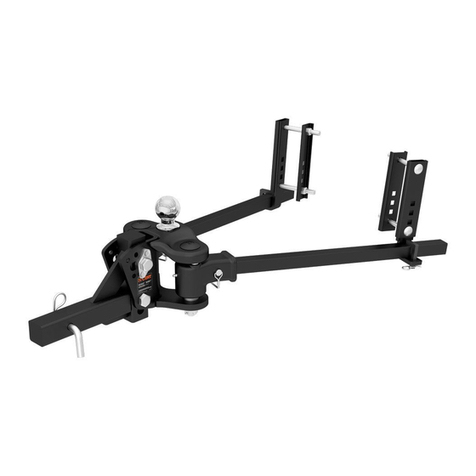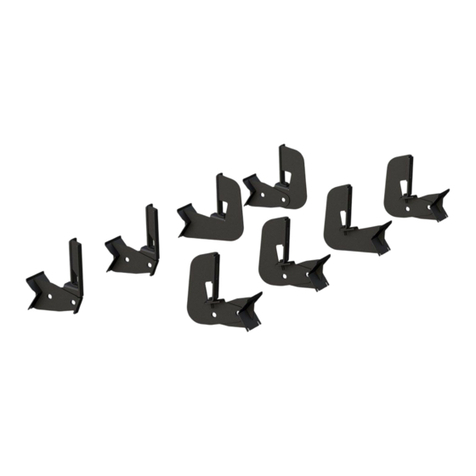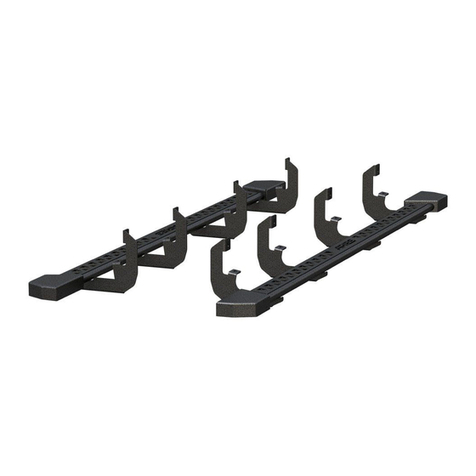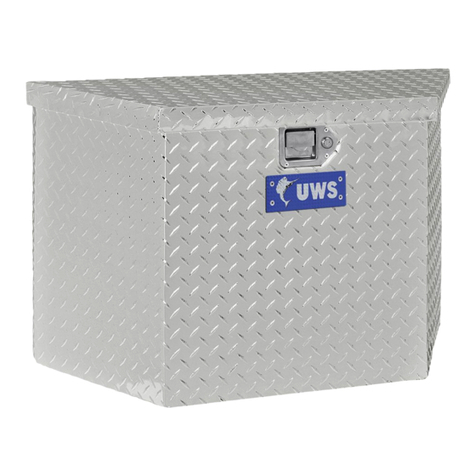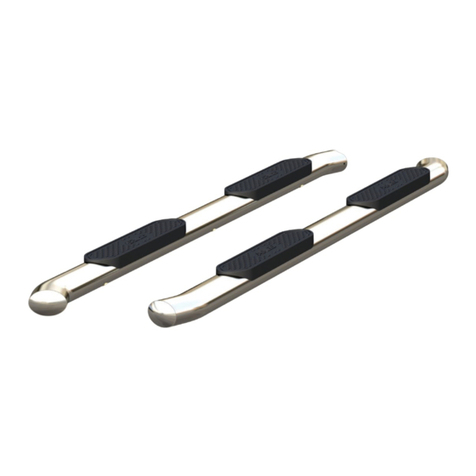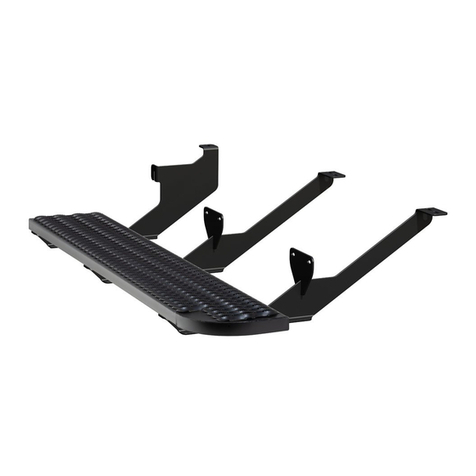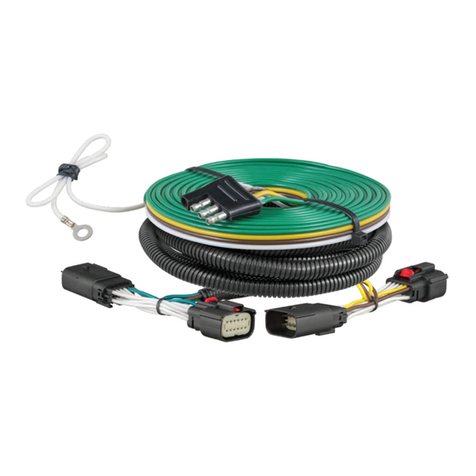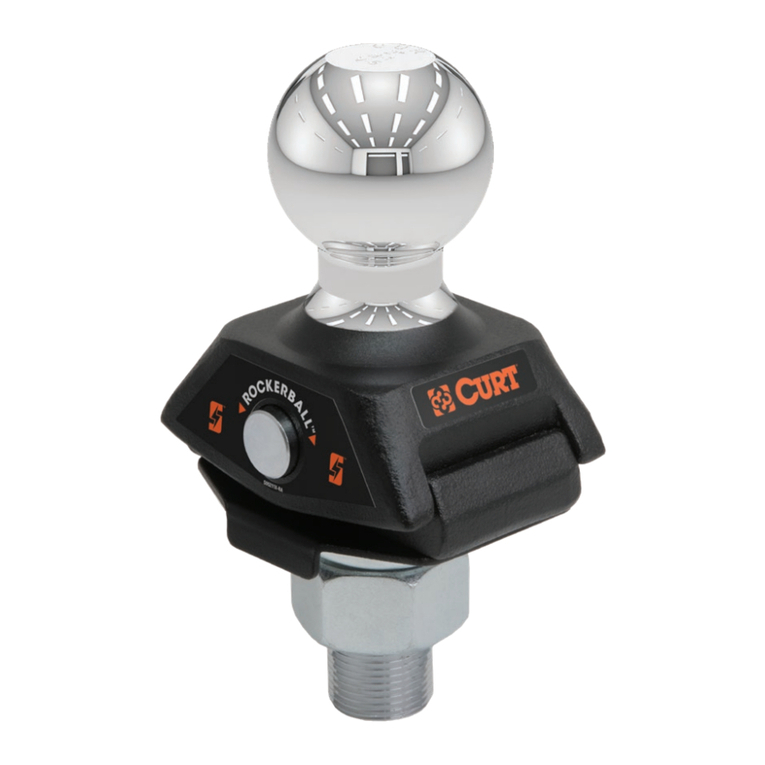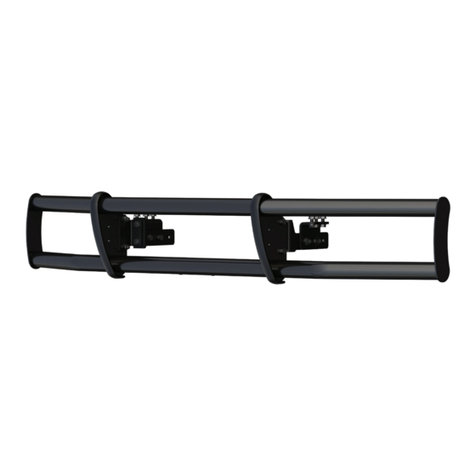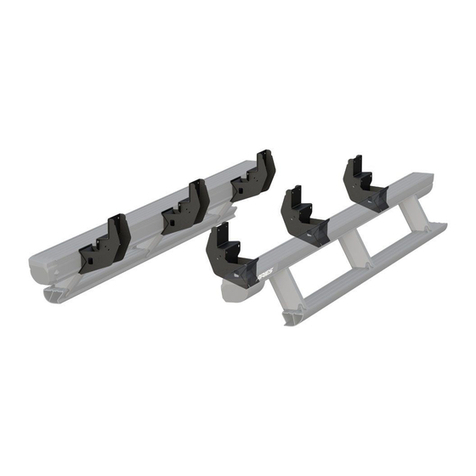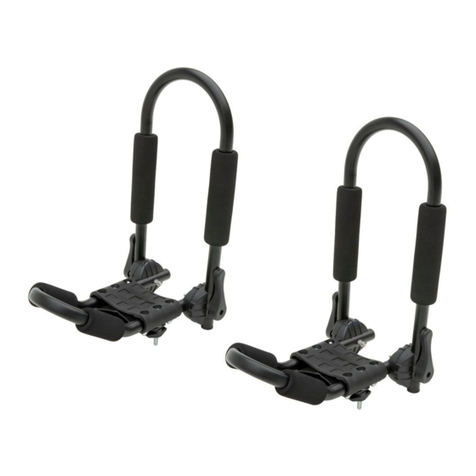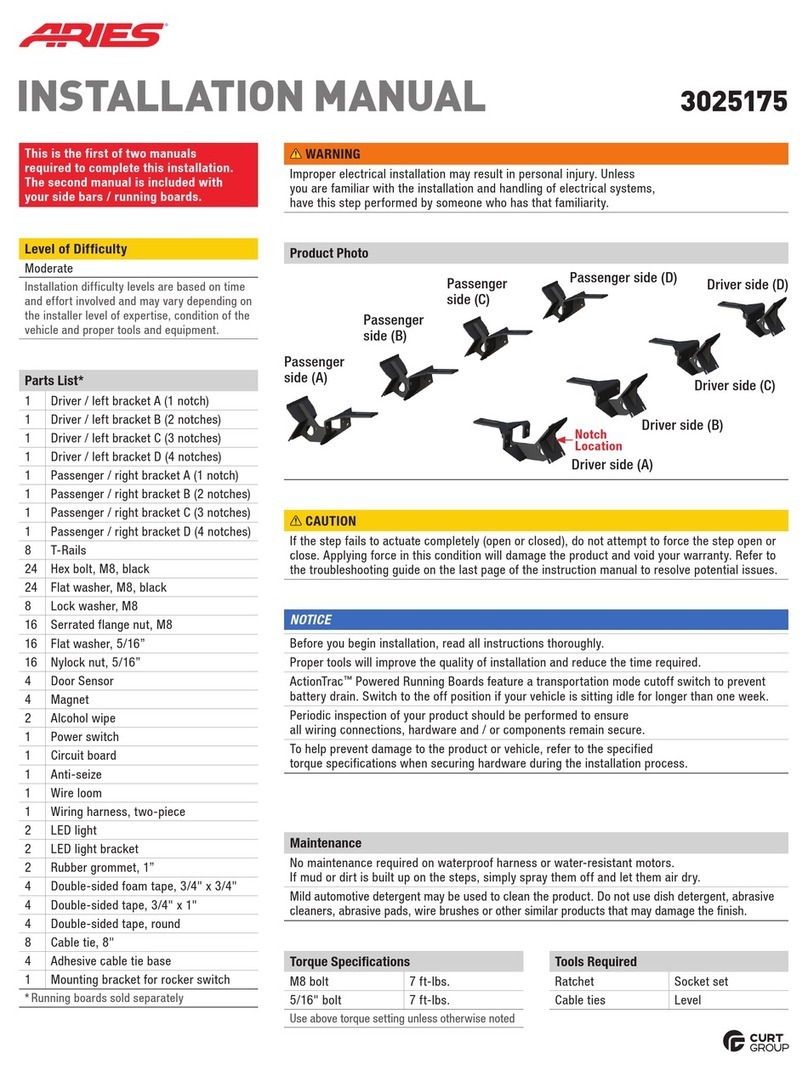
CURTMFG.COM •PRODUCT SUPPORT: 877.287.8634 •19750-INS-RA •12/10/2020 •ECN7812 •PAGE 1
Product Registration and Warranty
CURT stands behind our products with
industry-leading warranties. To get copies
of the product warranties, register your
purchase or provide feedback, visit:
warranty.curtgroup.com/surveys
Weight Carrying Capacity
Gross vehicle weight rating 5,000 lbs.
INSTALLATION MANUAL 19750
Tools Required
Ratchet Torque wrench
Socket, 9/16" Socket, 3/4"
Open end
wrench, 9/16"
Open end
wrench, 3/4"
Level of Difficulty
Moderate
Installation difficulty levels are based on time
and effort involved and may vary depending on
the installer level of expertise, condition of the
vehicle and proper tools and equipment.
Product Photo
Parts List
Item Qty Description
1 2 Front tube
2 4 Nut, 1/2"
3 2 Clevis mount
4 4 Hex bolt, 1/2"-13 x 1-3/4"
5 2 Hex bolt, 1/2" -13 x 3-1/2"
6 4 Flat washer, 1/2"
7 2 Bolt plate weldment
8 2 Leg adapter weldment
9 1 Coupler assembly
10 2Safety pin, 1/2"
11 2Top lock flange nut, 1/2"-13
12 4Center lock hex nut, 3/8"-16
13 2Tow bar arms
14 8Flat washer, 3/8"
15 4Serrated washer
16 4Hex bolt, 3/8"-16
17 4Nylock nut, 3/8"-16
WARNING
Never exceed the vehicle manufacturer's recommended gross vehicle weight rating (GVWR).
Follow your vehicle's owner's manual for all flat towing steps and limitations.
When operating the tow bar ensure you are in a safe
position from vehicle movement and pinch points.
Verify adequate clearances between both vehicles
and your towing system in all maneuvering situations.
Always use safety cables when towing. Ensure the safety cables are long enough
to allow for turns without becoming entangled with the tow bar or latch handles.
Safety or electrical cables becoming entangled with the latch handles could
cause one or more arms to collapse, resulting in major damage, injury or death.
Damage may occur if cables come in contact with the ground, tow bar arms
or the latch handles. Never wrap cables around tow bar arms. Inspect safety
cables prior to towing. Never use damaged safety cables.
Ensure that your towing vehicle is of adequate size to properly control
your towed vehicle. Vehicle performance (braking, handling, acceleration,
turning radius) can be drastically affected by the towed vehicle. Allow for
additional time and space for stopping, changing lanes, passing and turning.
Be sure towing and towed vehicles are aligned with proper tire air pressure.
Low air pressure and misaligned vehicles may cause excessive wear,
poor vehicle tracking and extra stress on your towing system.
Never back up while flat towing a vehicle. Damage to both vehicles and towing system may occur.
Inspect the tow bar and towing system prior to every use. Check for cracked welds, loose,
worn or damaged parts. Do not tow with a damaged or worn tow bar or towing system.
Severe bumps can damage your towing system. Avoid rough terrain and sharp turns.
Always tow at reduced speeds, never exceed 50 miles per hour.
Never use towed vehicle for storage, this may cause you to
exceed the capacity of the tow bar or your towing system.
The steering wheel of the towed vehicle must be unlocked to allow vehicle to track freely while
towing. Failure to do so may result in loss of control, property damage, personal injury or death.
